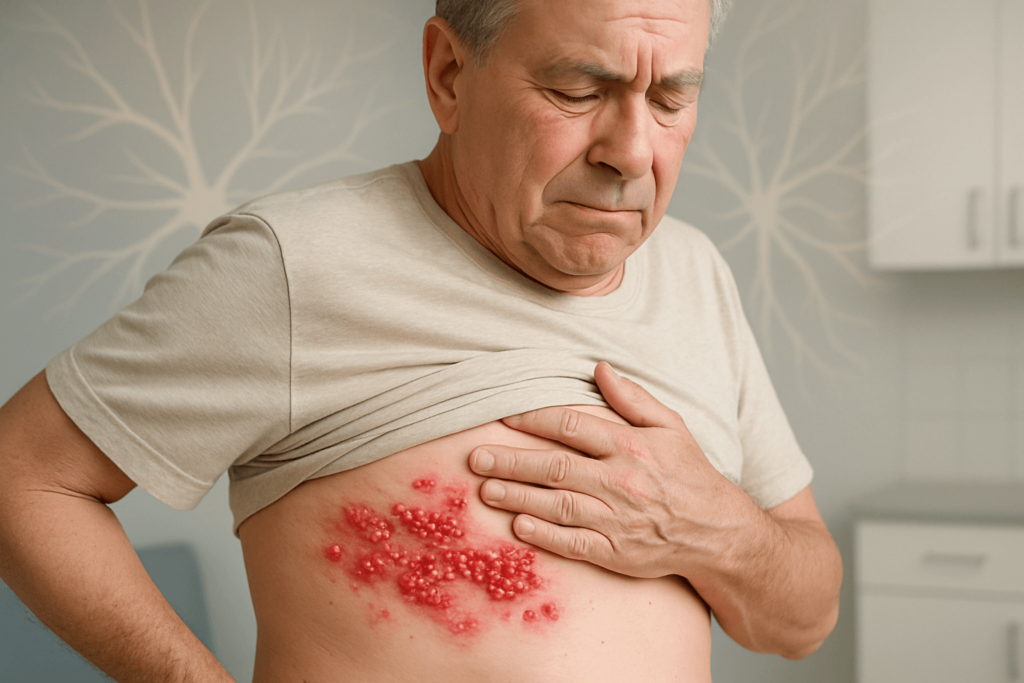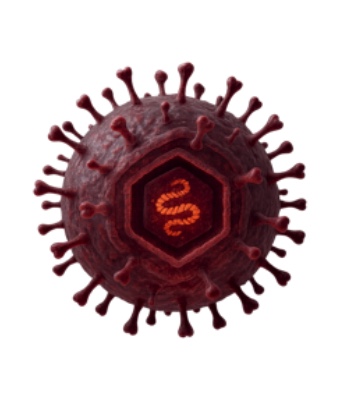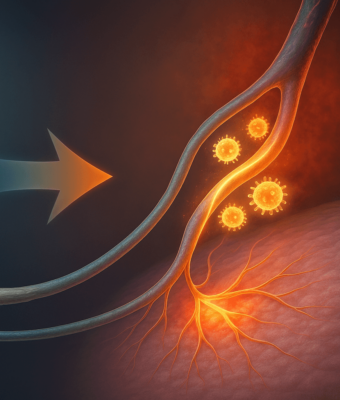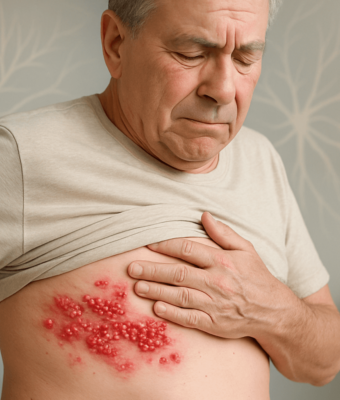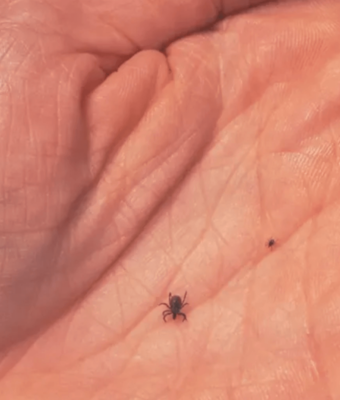Herpes zoster (HZ), commonly known as shingles “kenali cacar api”, is the clinical manifestation of the reactivation of Varicella-Zoster Virus (VZV), which initially causes varicella (chickenpox). Although often considered a minor skin condition, HZ has the potential to cause long-term neurological complications, particularly in older adults and immunocompromised patients.
General practitioners and frontline healthcare providers play a crucial role in recognizing, managing, and preventing HZ. An integrated approach—including accurate diagnosis, timely treatment, and preventive strategies through education and vaccination—is essential to reduce morbidity.
Pathophysiology
Following a primary varicella infection, VZV remains latent in the dorsal sensory ganglia. Reactivation may occur due to a decline in cellular immunity, particularly reduced function of CD4+ and CD8+ T lymphocytes specific to VZV. This leads to nerve inflammation and vesicular eruptions along the affected dermatome.
Diagnosis of Herpes Zoster
A. Clinical Diagnosis
· Shingles “kenali cacar api” is typically diagnosed based on clinical presentation:
· Prodromal symptoms: burning pain, tingling, or localized itching 1–5 days before rash onset.
· Vesicular lesions: confined to a single dermatome, unilateral, not crossing the midline.
· Neuropathic pain: moderate to severe intensity, may precede the rash.
B. Supporting Diagnostics
These may be required when the diagnosis is uncertain or in immunocompromised patients:
· PCR of VZV-DNA from lesion fluid (gold standard).
· Tzanck smear: shows multinucleated giant cells, but is non-specific.
· IgG/IgM serology: not sensitive for reactivation.
· Skin biopsy: for differential diagnosis from herpes simplex, contact dermatitis, or vasculitis.
Integrated Management
A. Antiviral Therapy
Most effective when started within 72 hours of rash onset:
· Acyclovir 800 mg 5 times/day for 7 days
· Valacyclovir 1 g 3 times/day for 7 days
· Famciclovir 500 mg 3 times/day for 7 days
Note: Dose adjustment is necessary for patients with renal impairment.
B. Pain Management
· NSAIDs/paracetamol: for mild pain
· Gabapentin/pregabalin: for moderate to severe neuropathic pain
· Tricyclic Antidepressant (e.g., amitriptyline): second-line alternative
· Topical lidocaine patch: for localized allodynia
C. Prevention of Secondary Infection
· Maintain lesion hygiene
· Apply topical antibiotics if signs of bacterial superinfection are present
D. Management of Complications
· Postherpetic Neuralgia (PHN): persistent pain ≥90 days. Prevent with early antiviral therapy and aggressive pain control.
· Herpes zoster ophthalmicus: refer to ophthalmologist if lesions affect the V1 branch of the trigeminal nerve.
· Disseminated zoster: hospitalization and intravenous therapy are required for immunocompromised patients with widespread lesions.
Shingles Prevention and Vaccination
A. Vaccination Indications
· Adults aged ≥50 years, even if they have had previous HZ
· Patients with chronic illnesses: diabetes mellitus, cancer, CKD, HIV
· Immunocompromised individuals (vaccine selection must be appropriate)
B. Types of Vaccines
· Live-attenuated zoster vaccine : limited efficacy in older adults
· Recombinant zoster vaccine : high efficacy (>90%), non-live, safe for immunocompromised patients
Patient Education and the Role of Primary Care Physicians
· Early symptom education: encourages prompt treatment-seeking behavior
· Understanding “kenali cacar api” at-risk populations: elderly, cancer patients, transplant recipients, individuals with HIV
· Active vaccination campaigns: especially in primary care clinics, community health centers, and geriatric settings
Clinical Summary for Practice
Aspect Summary
Diagnosis Clinical; unilateral vesicular rash in a dermatomal pattern
Core Management Antivirals ≤72 hours, pain management, patient education
Main Complications PHN, ophthalmic zoster, Ramsay Hunt syndrome, dissemination
Vaccination Recommended for adults ≥50 years
Role of Physicians Early detection, prompt treatment, patient education
Conclusion
An integrated approach to managing shingles “kenali cacar api” involves a combination of rapid diagnosis, timely antiviral therapy, comprehensive pain management, and preventive strategies through vaccination. Frontline physicians play a central role in reducing complication rates and improving quality of life for patients with “kenali cacar api”, especially among older and immunocompromised populations.
Through continuous education and empowerment of primary care systems, the clinical burden of shingles can be significantly reduced.
References
1. Dworkin RH, et al. Management of Herpes Zoster and Postherpetic Neuralgia. Clin Infect Dis. 2007;44(Suppl 1):S1–S26.
2. Johnson RW, Rice AS. Herpes zoster postherpetic neuralgia: pathophysiology and management. BMJ. 2014;348:g3315.
3. Cunningham AL, et al. N Engl J Med. 2016;375(11):1019–1032.
4. Indonesian Dermatology Association. Clinical Guideline for Herpes Zoster, 2023 edition.
About Docquity
If you need more confidence and insights to boost careers in healthcare, expanding the network to other healthcare professionals to practice peer-to-peer learning might be the answer. One way to do it is by joining a social platform for healthcare professionals, such as Docquity.
Docquity is an AI-based state-of-the-art private & secure continual learning network of verified doctors, bringing you real-time knowledge from thousands of doctors worldwide. Today, Docquity has over 400,000 doctors spread across six countries in Asia.
Meet experts and trusted peers across Asia where you can safely discuss clinical cases, get up-to-date insights from webinars and research journals, and earn CME/CPD credits through certified courses from Docquity Academy. All with the ease of a mobile app available on Android & iOS platforms!
